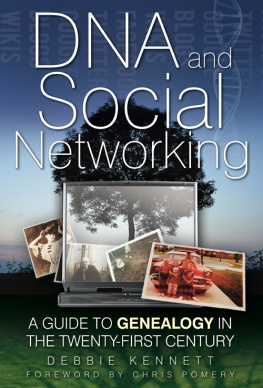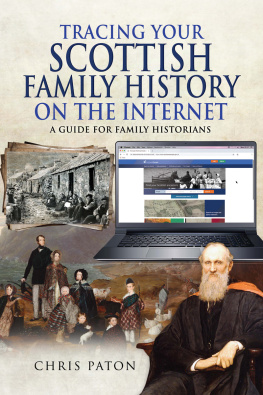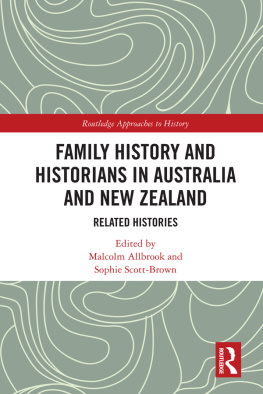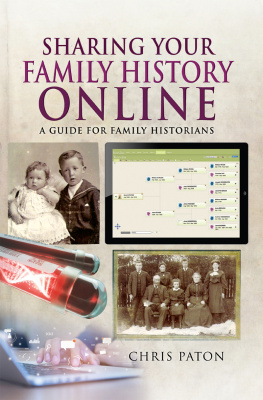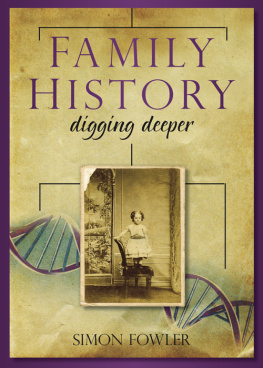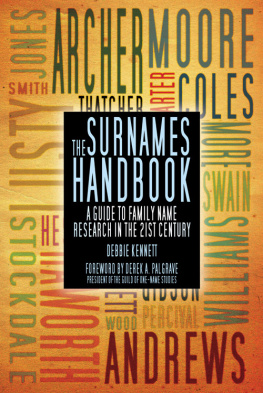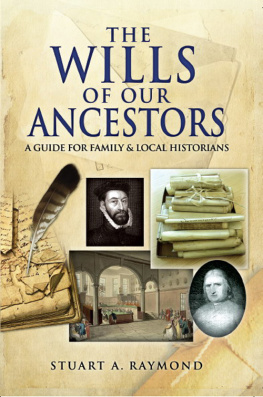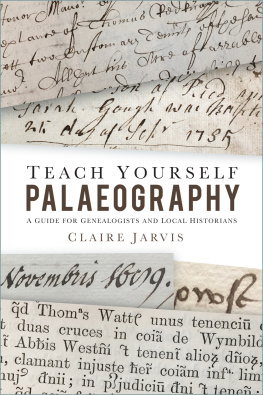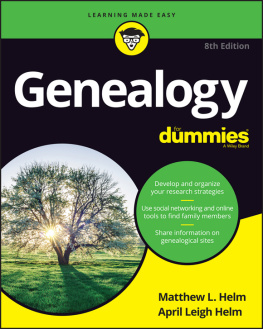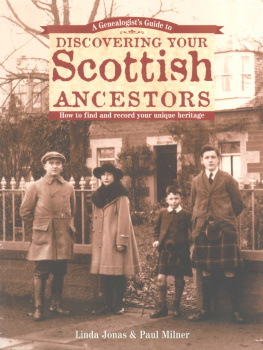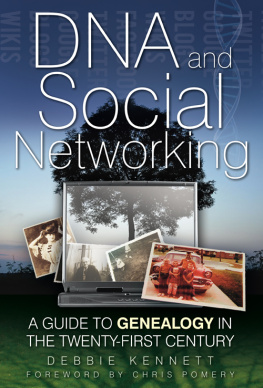
Contents
by Chris Pomery |
|
|
|
|
|
|
|
|
|
|
|
|
|
Appendix A |
Appendix B |
Appendix C |
Appendix D |
by Chris Pomery
This book is timely as it catches family history at a point where it is changing from being predominantly a solitary pursuit and becoming more and more a group endeavour. The networking methods that Debbie reveals in this book and the collaborative skills that she teaches can be used by every genealogist to help widen our searches and accelerate our research.
Were all aware that the last decade has seen an explosion in the amount of family history data arriving online. The days when most genealogical research started out with day-long trips to record offices armed with a notepad and pencil have now passed. Today the first place people look when they begin their research is on the web. This has to be a good thing. More people have access to the data, they have equal access to it and they can access it from anywhere around the world at any time they choose. These changes have also led to an increase in the number of people researching each source, and to many more people placing the results of their research online, either as a tree, a website or even simply as a note on an online bulletin board.
While some research is always going to be of a less than high quality, the increased sharing stimulated by the web helps each of us to move our own research forward quicker. Thats a clear improvement on the pre-email past, but the main benefits of the internet age are truly found when we learn to work together; building up a team of researchers and collaborators who by working together achieve more than any one individual ever could, and more quickly. This book explains how everyone can start to reap the benefits of that networking process, regardless of whether youre running a DNA project or not.
A major section of the book youre holding describes the latest developments in the fast-changing field of genetic testing for genealogists. Next to the arrival of the internet, the application of genetic tests for use by family historians is the second great genealogical revolution of the past decade. Long used by population scientists to unravel how mankind spread across the planet from our origins in Africa, we now have ten years experience of using DNA testing to advance our family history research.
Today many thousands of DNA projects are currently underway around the world; run by ordinary people like you and me, the vast majority of them analysing whether men who share the same surname are genetically related to each other and, therefore, belong in the same family tree. The pool of around half a million Y-chromosome DNA results that has now been built up is helping each of us develop a clearer picture of how our surnames came into being, how and why they grew as they have done and how related we are to each other.
Genetic testing increasingly looks set to become an integral part of everyday genealogical research in the years ahead. A decade ago, a DNA test was seen as something exotic and tangential to the main work of the genealogist, which was visiting archives and transcribing the data in them. Today its possible to run a parallel DNA project and to use the DNA results to confirm we have identified the correct people within each line and tree. While the first generation of tests looked only along two of our many lines the direct paternal and maternal lines the good news is that the new, second generation of DNA tests is going to be even more useful, as they help identify anyone who descends from any one of our great-great-grandparents.
This is a book that has been waiting to be written, and Debbie is the right person to write it. Well known within the Guild of One-Name Studies as an expert on social networking, she has been promoting her own surname DNA project, which is investigating the origins of the West Country surname Cruwys, for many years. This book summarises her experience in a highly readable format, which serves both as a primer for family history researchers, and as a resource that anyone can dip in to in order to learn more about social and online networking, and about DNA testing.
www.DNAandFamilyHistory.com
The first decade of the new millennium has been an exciting time for the family historian. I took my first tentative steps on the internet in December 2000 and one of the first searches I performed on Google was for the surname Cruwys (pronounced Cruise), my own maiden name. There were probably no more than a few hundred results and I was able to work my way right through to the end of the search list. A similar search today returns around 30,000 hits. When I first started to research my family history I purchased censuses on CD and microfiche, and scrolled through reels of microfilm at the library. Now all the UK censuses from 1841 through to 1911 are transcribed and indexed and, for the price of a subscription to a commercial provider such as Ancestry.com or Findmypast, digital images of the original census pages can be viewed online or downloaded on to a home computer. New datasets, such as wills and parish register collections, are being added on a regular basis and the challenge now is that there is so much available on the internet that it is difficult to find the time to search through all the new records. The increasing availability of online records has in turn fuelled a growing interest in family history research in the UK, helped in part by the popularity of television programmes such as Who Do You Think You Are? which first hit our screens back in 2004.
The world of genetic genealogy
DNA testing has developed in parallel to these new developments in the family history world. The first commercial DNA tests for genealogists became available in the year 2000, the same year in which scientists published the first draft of the human genome. By the end of 2001 there were about 100 or so DNA projects in existence. Four years later the number of projects had grown to over 2,500. By the end of the decade there were well over 6,000 projects. I first became aware of the possibilities of DNA testing when I joined the Guild of One-Name Studies in 2006. Two Guild members, Susan Meates and Chris Pomery, were among the early pioneers of DNA testing. Susan published a series of articles in the Guilds journal on the Meates DNA project, and Chris had already published his first book on the subject with a second to follow in 2007. I set up my first project for my Cruwys/Cruse one-name study in September 2007. There are distinct advantages in being one of the second-phase adopters of a new technology. I was able to draw on the collective knowledge of my fellow Guild members and other project administrators, both here and in the US, and learn from their mistakes and experiences. If ever I had a difficult question or an unusual result there was always someone who could provide the answer. Boosted by the success of my surname project, in March 2009 I set up a new DNA project for the county of Devon, and later that same year I became a co-administrator of the mitochondrial DNA haplogroup U4 project. I now have responsibility for over 550 project members, which has given me a very broad insight into the range of results that might be expected across the full spectrum of tests. I learn more as each new result comes in and, through the process of explaining DNA test results to a large number of project members, I have come to understand the questions that can arise and the problems that people have understanding their results. In the few years since I have been involved in DNA testing the science has not stood still. New initiatives have been launched, new features have been added to existing products and a major new DNA test has been added to the toolbox for the family historian. I have been able to monitor these developments as they have happened and have tested either myself or members of my family as appropriate.
Next page
